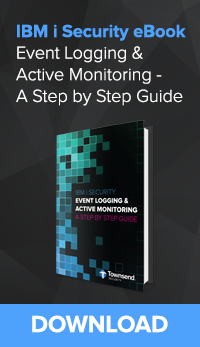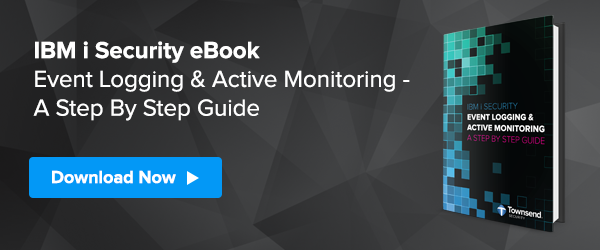 Section 10 of PCI DSS requirements v2.0 states the need to track user activities, to be able to detect, prevent or minimize the impact of a data compromise. Because of the mere fact that most every application under the sun produces a log entry for when something goes amiss, you can also use that same log file as a security tool. It can provide a means of tracking and analysis when a possible data breach may be occurring as well as add crucial detail for investigative purposes. Now a smart criminal knows to cover their tracks at the scene of a crime, and they can do this simply by wiping out any log data that may exist. However if you’re capturing these logs in real time and sending them to a third party server, even the most savvy of crooks will be caught red handed.
Section 10 of PCI DSS requirements v2.0 states the need to track user activities, to be able to detect, prevent or minimize the impact of a data compromise. Because of the mere fact that most every application under the sun produces a log entry for when something goes amiss, you can also use that same log file as a security tool. It can provide a means of tracking and analysis when a possible data breach may be occurring as well as add crucial detail for investigative purposes. Now a smart criminal knows to cover their tracks at the scene of a crime, and they can do this simply by wiping out any log data that may exist. However if you’re capturing these logs in real time and sending them to a third party server, even the most savvy of crooks will be caught red handed.
Our Alliance LogAgent solution helps accomplish that, as well as satisfying parts of section 10 of PCI DSS by being able to capture logs from your IBM i’s audit journal, formatting them and sending them off to a waiting log collection server. We monitor for log entries out of numerous places on the iSeries allowing the user the a level of granularity to choose what log messages to capture and kick over the wall to the waiting log server. It's always a good idea to work hand-in-hand with your PCI auditor to make sure you're collecting all the appropriate events on your system to meet their requirements.
For instance, you'll want to make sure you're collecting AF (Authority Failure Events) events which come from the System Value QAUDLVL. This particular event is triggered by all access failures, such as sign-ons authorization, and job submissions. It also includes incorrect password and user ID attempts from a device. These details can play a crucial role in tracking down details around a possible breach into your system.
As I mentioned, Alliance LogAgent sends these events to a listening collection server or SIEM solution. We work with any SIEM product that is actively listening and waiting for logs to arrive and can accept messages in the RFC 3164 or Common Event format. There are a number of SIEM products available on the market and they help parse the influx of log messages as they arrive, as well as send out notification and alert emails when something suspicious is detected.
Currently, the PCI guidelines don't include transmitting logs over a secure SSL/TLS session (it’s a very, very good idea). However, looking ahead to when this becomes a requirement, you can rest assure that you’re already running software that can meet those needs. LogAgent is already setup to handle secure SSL/TLS transmissions and is one of the reasons it stands apart from the competition. The only change you'll have to make in the configuration of the product when switching over from UDP/TCP to SSL will be to provide an SSL application ID. This is an ID that is associated with a digital certificate that you can create with IBM's Digital Certificate Manager (DCM). Having this secure session in place will ensure that your log message data won't be intercepted on its journey to the collection server.
Download a free 30-day evaluation of Alliance LogAgent Suite and meet Section 10 of PCI DSS. In under an hour, you can start collecting all system logs on your IBM i (AS/400) and converting them to syslog or CEF format for any SIEM or log collection server.
Meeting Section 10 of PCI with System Logging on IBM i (AS/400)
Topics: System Logging, PCI DSS, Alliance LogAgent
System Logging: Log Messages Format for your SIEM - RFC 3164 or CEF?
 The Alliance LogAgent Solution for system logging on the IBM iSeries is able to grab log messages out of a variety of places such as your system's audit journal, (QAUDJRN), your history log (QHST), and system operator messages (QSYSOPR) and format them to either a standardized Syslog format, in this case RFC3164 or Common Event Format (CEF). Once formatted, we pass the messages over to the communications module that handles the transmission of the messages to your waiting log collection server using either the UDP, TCP or SSL/TLS protocol.
The Alliance LogAgent Solution for system logging on the IBM iSeries is able to grab log messages out of a variety of places such as your system's audit journal, (QAUDJRN), your history log (QHST), and system operator messages (QSYSOPR) and format them to either a standardized Syslog format, in this case RFC3164 or Common Event Format (CEF). Once formatted, we pass the messages over to the communications module that handles the transmission of the messages to your waiting log collection server using either the UDP, TCP or SSL/TLS protocol.
LogAgent can send to any collection server that is listening for messages. You simply assign either a remote host or IP address of the waiting server as well as the port number. Ideally you would want a SIEM (like from LogRhythm, Solutionary, or SolarWinds, for example) running on that server to read the messages that are received, sort them and send out alarms to your security team when dubious messages arrive.
 More often than not you'll want to use the Syslog format as it is generally accepted. The RFC3164 format that we use is composed of three parts. The first part is called the PRI, the second part is the HEADER, and the third part is the MSG.
More often than not you'll want to use the Syslog format as it is generally accepted. The RFC3164 format that we use is composed of three parts. The first part is called the PRI, the second part is the HEADER, and the third part is the MSG.
The PRI part is the Priority value and begins the log message. Its value is contained within angled brackets and is either two or three digits in length. It is comprised of the Facility value and the Severity level of the message. The Priority value is calculated by first multiplying the Facility number by 8 and then adding the numerical value of the Severity. (Example: <40> )
The second part of the message is the header which will contain a timestamp, and an indication of the hostname or IP address of the device it originated from. The MSG part will fill out the remainder of the syslog packet and contain the generated message and the text of the message.
Here is a quick sample of a log message in RFC 3164 format.
<118> Apr 18 16:32:58 10.0.1.11 QAUDJRN: [AF@0 event="AF-Authority failure" violation="A-Not authorized to object" actual_type="AF-A" jrn_seq="1001363" timestamp="20120418163258988000" job_name="QPADEV000B" user_name="TESTFORAF" job_number="256937" err_user="TESTFORAF" ip_addr="10.0.1.23" port="55875" action="Undefined(x00)" val_job="QPADEV000B" val_user="TESTFORAF" val_jobno="256937" object="AFTEST" object_library="CUS9242" object_type="*FILE" pgm_name="" pgm_libr="" workstation=""]
If you're using a SIEM such as ArcSight who is expecting logs messages in the Common Event Format (CEF) you can easily switch the formatting from the configuration menu of LogAgent to send in this manner. Much like the RFC 3164 version, the message contains a timestamp and hostname or IP address at the beginning. This is followed by the Extension part of the message and is really a placeholder for additional fields. Some common fields you'll find are CEF version, Device Vendor, Device Product Severity and Signature ID just to name a few.
Example of what a CEF formatted log message looks like.
Feb 29 15:47:25 10.0.1.43 CEF: 0|PATownsend|IBM-QAUDJRN|1.28|1007|CO-Create object|4|msg=CO-Create object act=N-Create of new object actual_type=CO-N jrn_seq=102361 timestamp=20120229154725823000 dproc=ICC suser=MVAGANEK job_number=638012 eff_user=MVAGANEK object=X_BIGNUM object_library=ICAPITST object_type=*MODULE object_attrCLE
It's always a good idea to check with the team managing your log collection server to see what format they are expecting log messages to arrive in. Hopefully having a clearer understanding of what your choices are will help make the task of deploying system logging on your AS/400 smoother and easier to satisfy section 10 of PCI DSS compliance. If you haven't yet, download a free 30-day evaluation of our Alliance LogAgent for IBM i system logging software. Our customers have deployed the solution in under an hour from the time they download the evaluation from our website!
Topics: System Logging, IBM i, Alliance LogAgent


